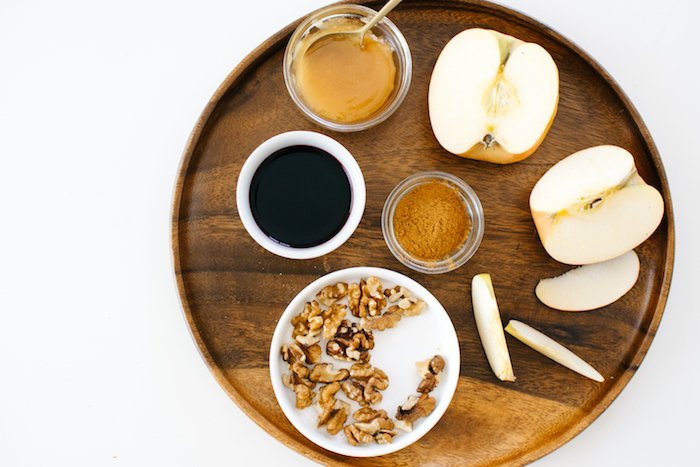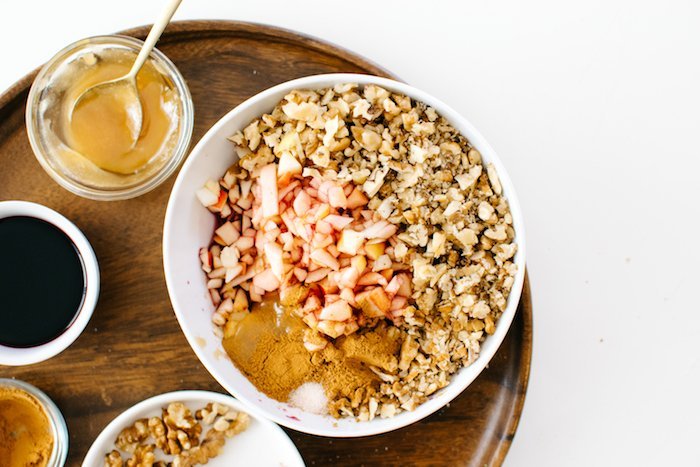It’s the rituals of remembrance I love best, the breath of tradition passed from family member to family member, an unbroken thread of sense memory and heart. So it is, even in the telling of a story as complex and tragic as that of Passover—the symbolism of each food at seder awakens sweetness within. An offering of lamb shank, salted water and bitter herbs to symbolize the tears and hardship of the enslaved, an egg for rebirth, and charoset as the bricks and mortar the Jews used in their work.

Charoset, for me, has always been something closer to a celebration: Sweet apples, red wine, and spices. We add a drizzle of honey in my family, and because I’m always on the hunt for balanced flavor, a touch of sea salt to finish it all off. While this is a perfectly acceptable pesach dinner accompaniment, it’s also wonderful eaten on its own at any time of year. 
If you feel like mixing it up, try using hazelnuts or almonds, or a mix, in place of walnuts. Charoset is as (or even more) delicious the second day as it is the first, and particularly wonderful served with yogurt in the morning.
By Lily Diamond
Ingredients
- 1 1/2 cups walnuts, or mix of nuts as desired
- 3 cups finely diced apples
- 3/4 cup Manischewitz or red table wine
- 2 tablespoons honey
- 1 tablespoon ground cinnamon
- 1/4 teaspoon sea salt
Directions
Gently toast the walnuts in your toaster oven or on the stovetop in a skillet, cool, and finely chop.
Mix toasted walnuts with diced apples, wine, honey, cinnamon, and sea salt. Fold in all ingredients until they’re fully incorporated. Store in an airtight container in the fridge until ready to serve.
Nutritional Information
- Calories
- 205
- Total Fat
- 14g
- Saturated Fat
- 1g
- Cholesterol
- 0mg
- Sodium
- 76mg
- Carbohydrates
- 15g
- Dietary Fiber
- 3g
- Sugars
- 10g
- Protein
- 4g
YIELD:
8 servings









Comments (0)